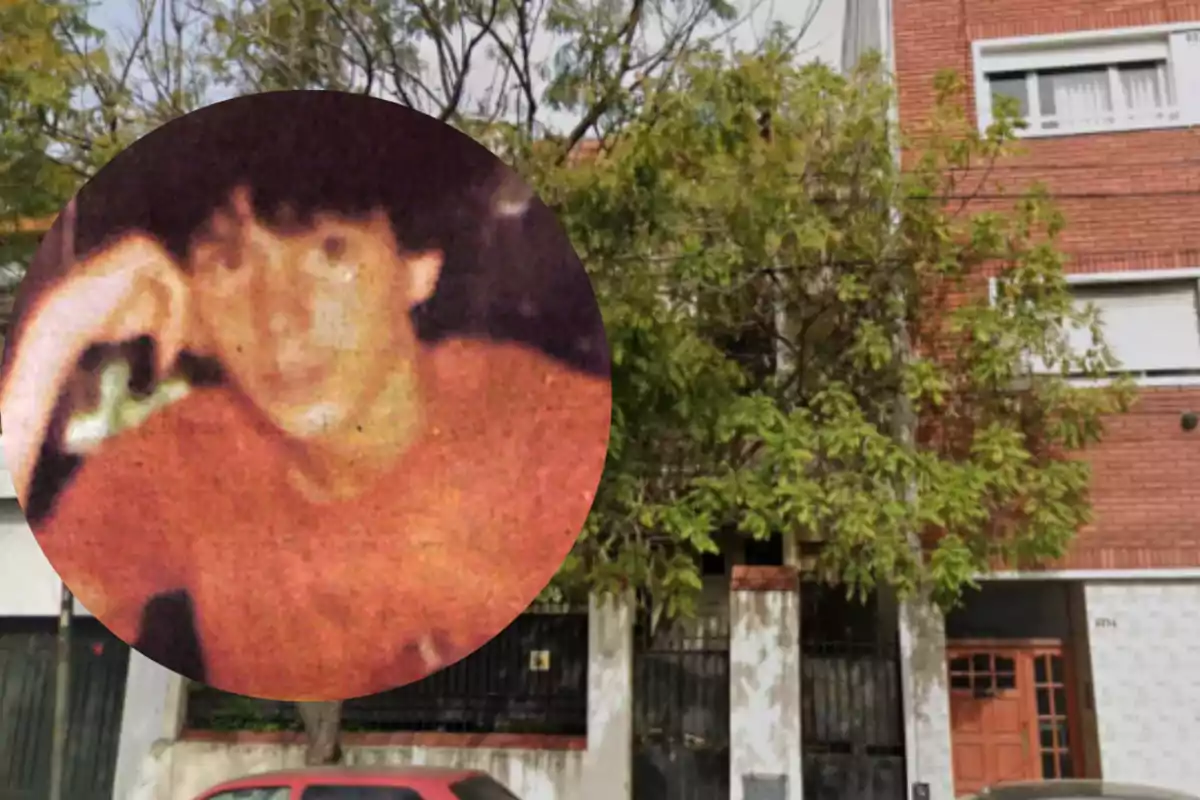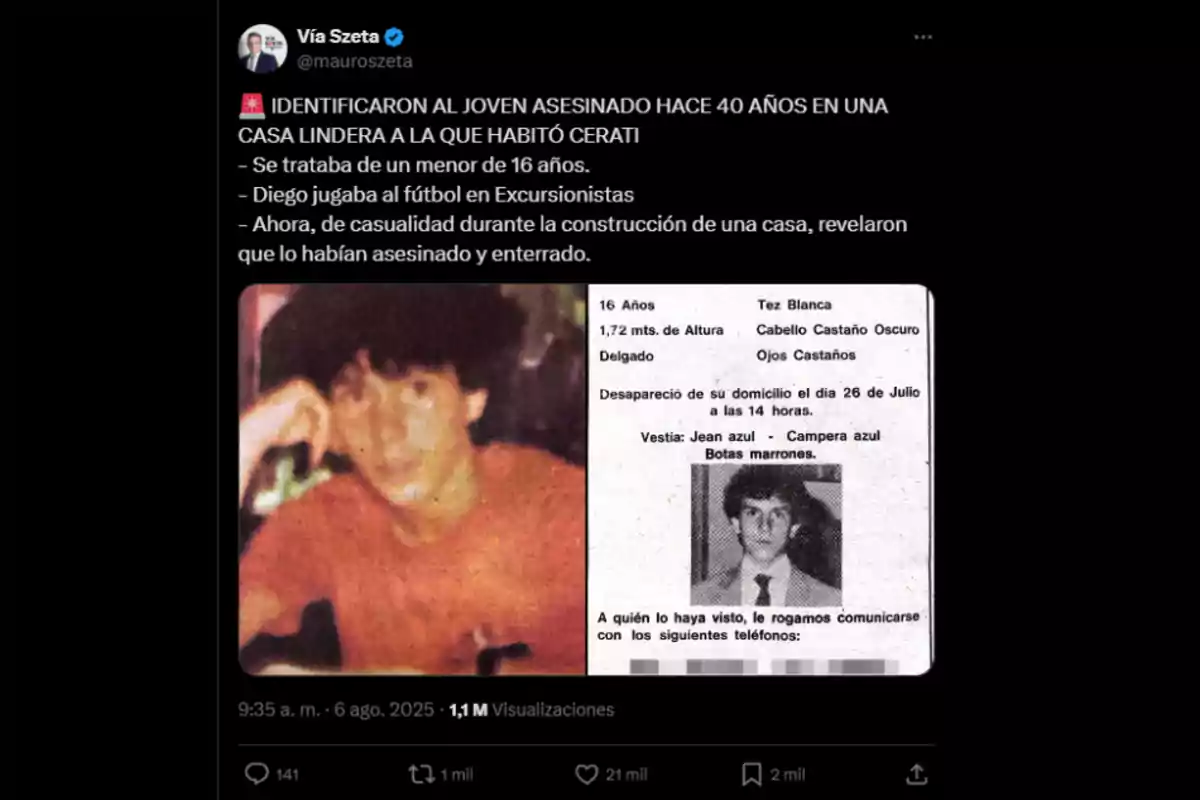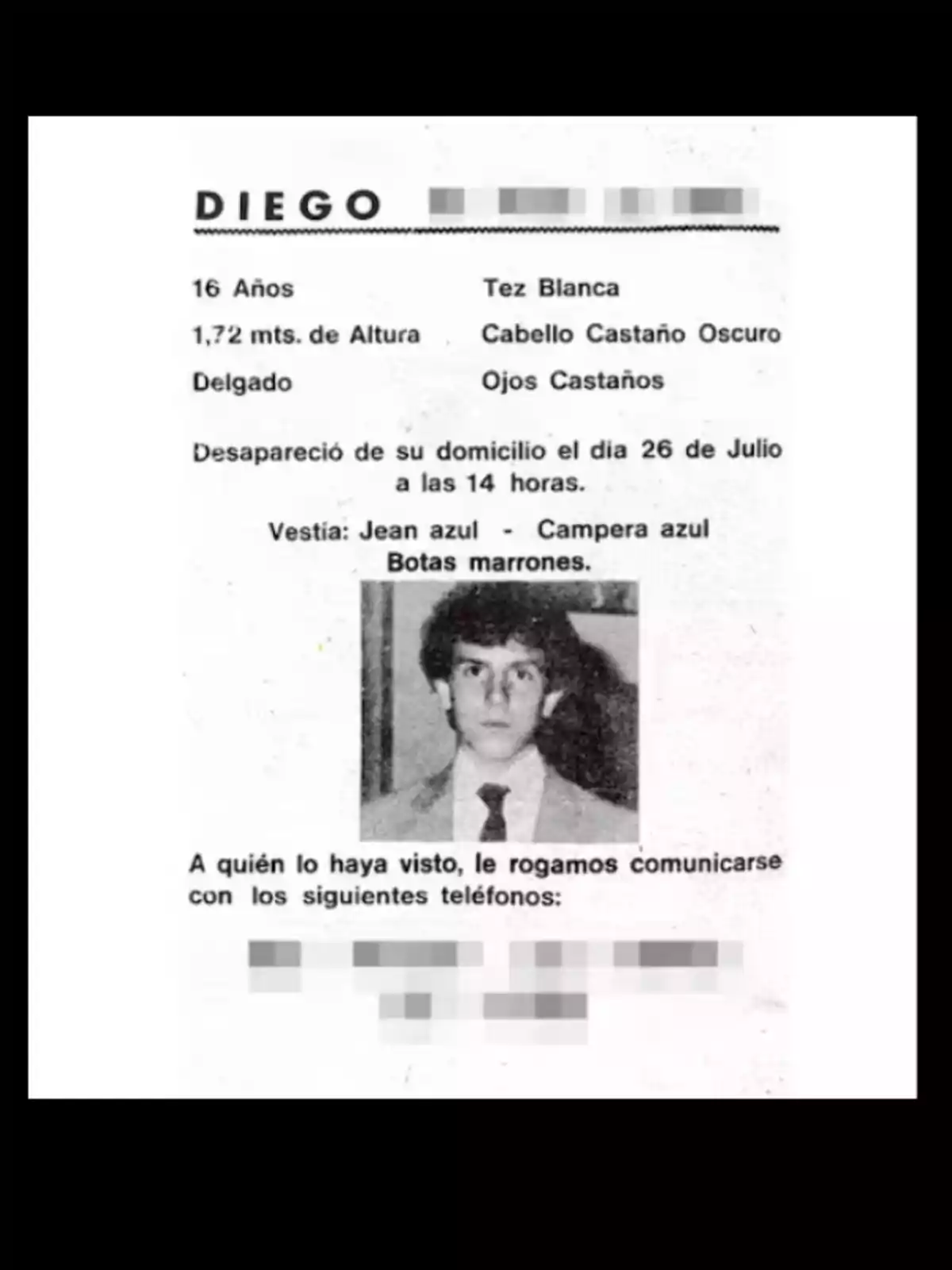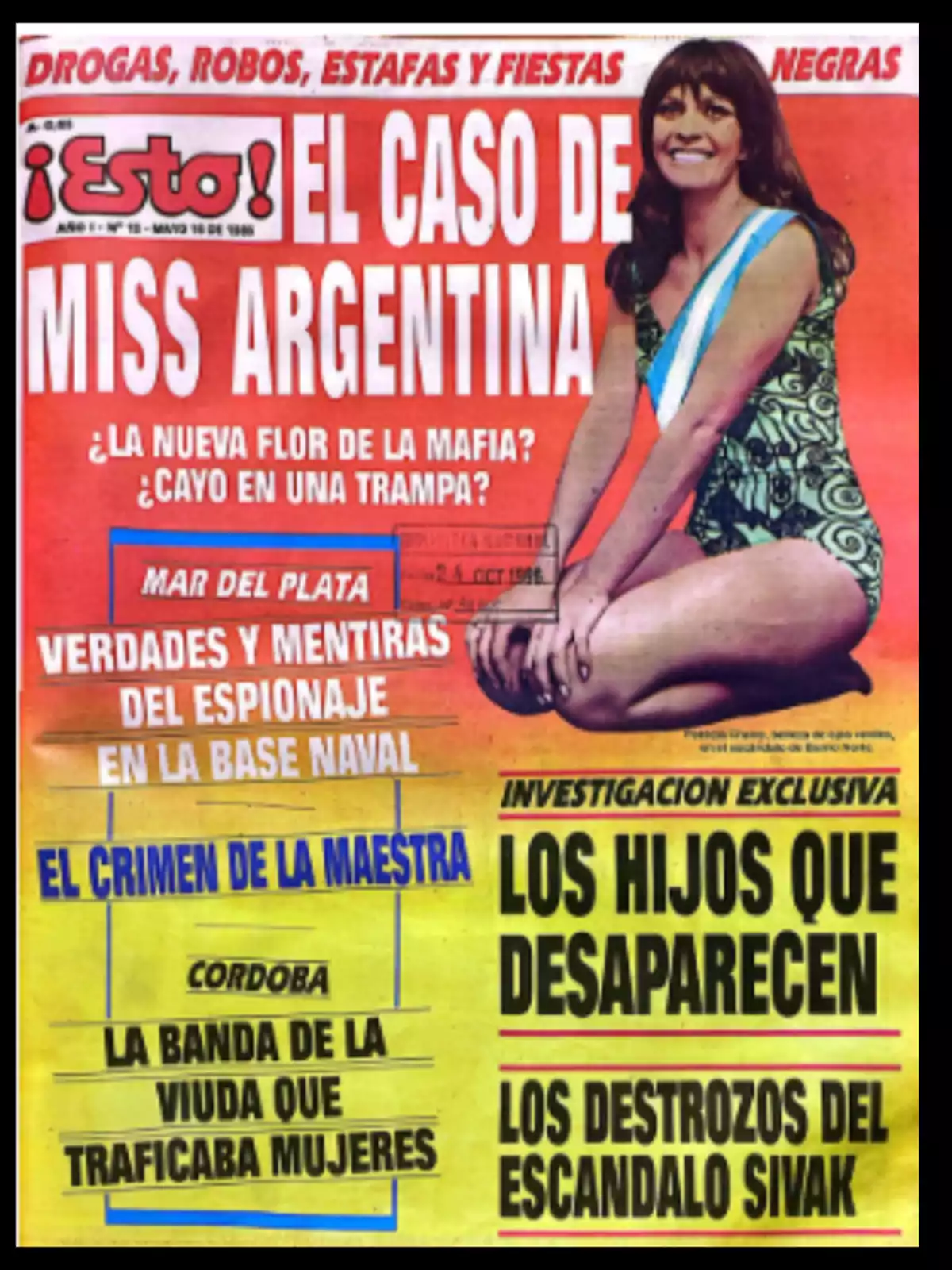
Remains found in Cerati's house: authorities confirmed the identity of the murdered young man
Diego was 16 years old when he disappeared in 1984; he was stabbed and buried next to the chalet where the musician lived
On July 26, 1984, Diego, a 16-year-old teenager, was last seen at the border between Villa Urquiza and Belgrano. That afternoon, after returning from school and having lunch, he asked his father for money to take a bus to a friend's house. He never came back.
His family tried to report the disappearance that same night at a Policía Federal Argentina police station, but the report was not taken. They were told it was a simple "runaway." His father, Juan Benigno, died years later without knowing what had happened to his son.
An unexpected discovery next to Cerati's house
The case began to be unexpectedly unlocked on May 20 of this year. While construction workers were working on a site on Congreso Street at 3700, in Coghlan, they found human skeletal remains when a piece of earth broke off from the adjoining wall. The work was being carried out on the land that had belonged to the house where Gustavo Cerati lived in the early 2000s.
According to police sources, the remains were found when the workers were digging and a portion of the neighboring land, divided by an old privet hedge, collapsed, exposing human bones. The 12C Neighborhood Police Station immediately intervened and the judicial investigation was launched.
Although the remains emerged from the lot where the Soda Stereo leader lived, investigators determined that they had actually been buried on the adjacent property, at a time when the backyards of both houses were connected by a simple natural fence.

It was confirmed to be a violent murder
The case was assigned to prosecutor Martín López Perrando, who requested the collaboration of the Argentine Forensic Anthropology Team (EAAF). At the end of June, the specialists delivered a key report: it was a young man between 16 and 19 years old, the victim of a violent death.
The forensic experts detected a stab wound at the level of the fourth rib, behind the arm, and signs indicating an attempt to dismember the body. Although it was not possible to determine whether the stab wound was the direct cause of death, there was no doubt that it was a homicide.
At that time, the victim was still a John Doe. The case still had no name.

The clue that emerged from a news story and the DNA that closed the circle
Clarín journalist Virginia Messi revealed Diego's full story and his parents' desperate search. The final push came when a nephew of the teenager, after reading the news about the discovery, suspected it could be his uncle.
This nephew of the victim, after reading the news about the discovery, thought it could be his uncle. His intuition was correct. Diego's mother agreed to provide a DNA sample and the EAAF was able to confirm the genetic compatibility with the remains found.
Four decades later, Diego's family was able to learn the truth. The teenager who had been ignored by the justice system under the label of "runaway" was finally recognized as the victim of a brutal crime.

The story that resisted oblivion
In 1986, when Diego had been missing for two years, his father told Esto! magazine about his frustration with the authorities: "The police say they have three thousand similar cases... They classified it as 'runaway' because that's how the forms were printed. I refused, but it was as if nothing happened."
The initial negligence and the lack of an investigation at the time prevented justice from being served in a timely manner. Only now, 40 years later, has his story come to light in an unthinkable discovery.
More posts: